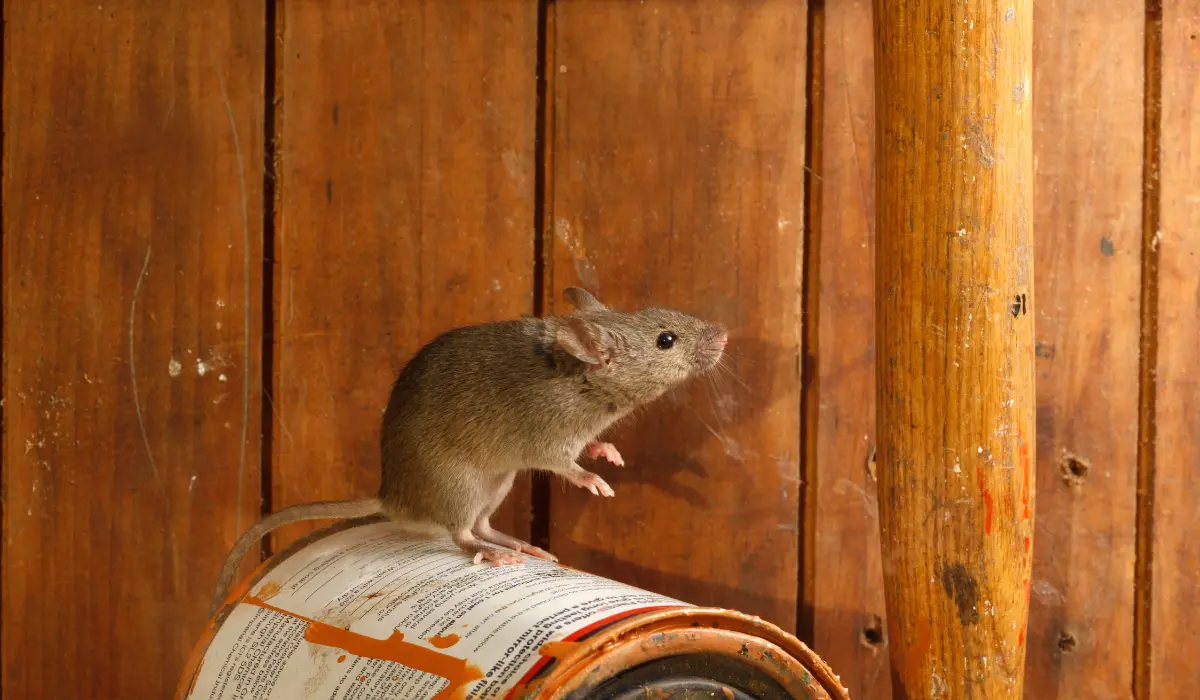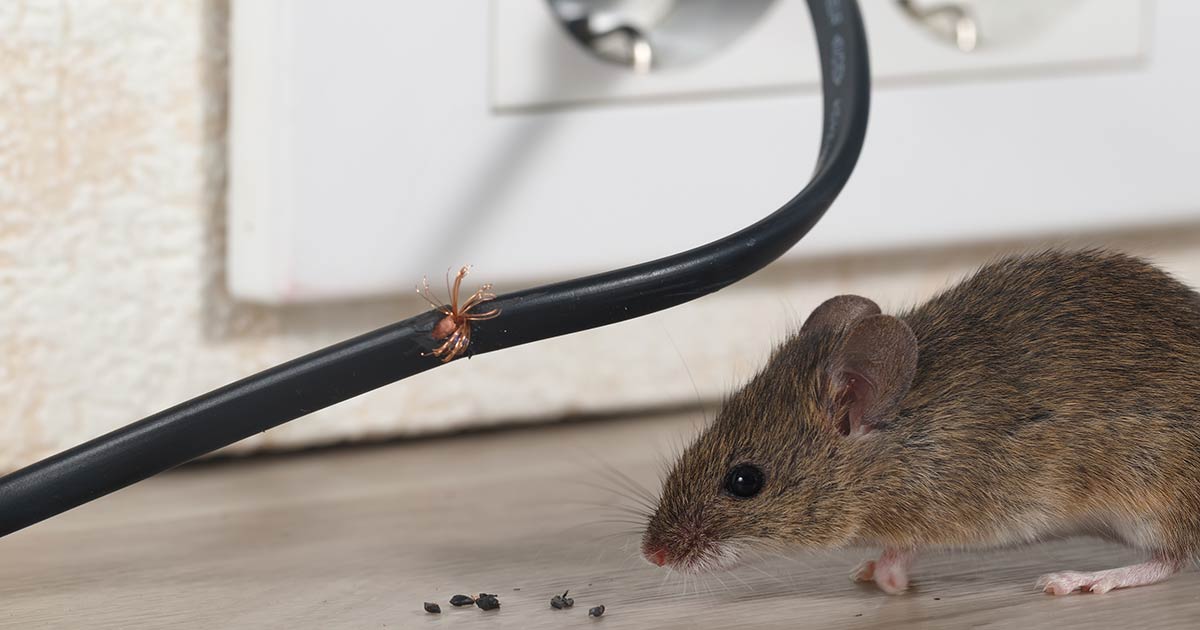Florida’s subtropical climate, with its high humidity and mild winters, offers favorable conditions for various pests—among them, mice. These nimble rodents seek out any accessible food or shelter, quickly turning a small opening or overlooked crumb into a full-scale infestation if not contained. Whether you live in Cape Coral or manage a property in North Fort Myers, identifying and tackling mice early is vital to prevent contamination, property damage, and the stress that often comes with a hidden rodent problem. This service page highlights how mice flourish in Florida’s environment, the telltale signs that mice may be inside your home or business, and how a professional mice exterminator deploys effective mice treatments. Acting swiftly when you notice suspicious noises or droppings not only saves time and expense but also preserves peace of mind for everyone occupying the building.
Why Mice Thrive in Florida

- Mild Winter Temperatures
In states with harsh winters, sub-freezing periods curtail rodent activity for months, reducing their breeding cycles. Florida’s winter is typically mild, rarely reaching temperatures that significantly impact rodent survival. As a result, mice can continue foraging and reproducing all year, leading even a small oversight to balloon into a large infestation if no immediate steps are taken. - High Humidity and Rainfall
Mice gravitate to areas where water is readily available. Florida’s frequent rain and natural moisture from humidity or air-conditioning condensates provide consistent hydration sources. When heavy rainfall saturates the ground, mice often move indoors to avoid soaked nesting sites, giving them the opportunity to discover unsealed cracks or openings around foundations, windows, or plumbing lines. - Plentiful Food Supply
From suburban homes with uncovered garbage to commercial dumpsters, southwestern Florida presents mice with near-endless feeding opportunities. Mice readily consume any accessible foods—like cereal boxes left unsealed, crumbs under appliances, or pet bowls not emptied before nightfall. Once mice sense easy and steady meals, they establish nests in less-traveled corners or behind cabinets. - Minimal Seasonal Dormancy
In colder regions, rodents experience forced slowdowns during deep freezes, limiting breeding for months. Florida lacks these prolonged cold snaps, so mice remain consistently active, producing multiple litters if left unaddressed. Over the course of a mild season, a few breeding pairs can expand into a population occupying walls, attics, or crawl spaces. - Varied Construction and Rapid Growth
Cape Coral and North Fort Myers both experience ongoing development, with new and older structures coexisting. Construction displaces established rodents, prompting them to seek fresh territory if building foundations or eaves remain unsealed. Meanwhile, older properties with worn-out door sweeps, cracks near vents, or neglected yard debris make it easier for mice to sneak in for shelter.
Recognizing a Mice Infestation
- Droppings
Mice leave small, dark, rod-shaped droppings, often near feeding sites or along baseboards. Fresh droppings appear moist and darker, while older droppings turn dry or grayish. Finding clusters inside pantries, behind refrigerators, or inside cupboards strongly indicates active foraging by mice. - Nocturnal Noises
Mice mostly move at night, so if you hear faint squeaking or scampering behind walls, under floors, or in attic corners, it strongly suggests rodents. Noticing gnawing sounds on wood beams or wires at night also points to a hidden nest or established runways. - Gnaw Marks and Holes
Mice chew constantly to wear down their front incisors, leaving small nibble marks on wood, plastic, or cardboard packaging. You might see tiny, rough holes in cereal boxes or shredded paper in drawers. Recognizing these holes reveals where mice enter or gather supplies for nesting. - Nests Made of Shredded Materials
Mice construct nests from bits of paper, fabric, insulation, or similar soft items. These nests often appear in corners of closets, behind stored boxes, in seldom-used drawers, or under large appliances. Paired with droppings and gnaw marks, nest materials confirm an active breeding site. - Unusual Pet Behavior
Cats or dogs might fixate on baseboards, a cabinet corner, or an otherwise empty space where they detect rodent scent. If your pet appears captivated by a certain wall or dark nook, investigate carefully for droppings or nesting evidence.
Consequences of Untreated Mice
- Health and Sanitation Risks
Mice are known carriers of bacteria and viruses, potentially spreading contaminants via droppings or urine in kitchens or pantries. They may also host parasites like fleas or ticks, elevating infection possibilities. Addressing the issue quickly helps reduce disease concerns. - Rapid Population Growth
A single pair of mice can spawn multiple litters in a year. In Florida’s mild environment, breeding rarely slows, turning a small incursion of a few mice into dozens within weeks. Large populations can spread across multiple areas, from kitchens to attics, requiring more extensive treatments if left unchecked. - Property Damage
Mice gnaw on wooden support beams, insulation, or electrical wiring, creating short-circuit or fire hazards. They tear up paper, fabrics, or cardboard for nesting materials, leaving behind droppings that degrade sanitary conditions. Over time, such hidden damage can demand significant repairs. - Stress and Discomfort
Discovering droppings or hearing scuttling at night undermines occupant comfort. People may lose sleep worrying about potential contamination or sightings. Swift elimination spares families and businesses from continuous anxiety and repeated cleaning routines.

Why Professional Mice Treatments Matter
- Comprehensive Inspection
A professional exterminator begins by combing through kitchens, storage rooms, basements, or exterior corners to locate droppings, chewed materials, or other mouse indicators. Pinpointing nest locations and entry points shapes the overall strategy. - Targeted Sealing and Exclusion
Because mice slip through holes as small as a dime, blocking those routes is essential. Experts often use steel wool, metal flashing, or sealants around plumbing lines, door thresholds, or foundation cracks. Cutting off new mouse arrivals ensures that once existing rodents are removed, no more replace them. - Trapping and Baits
Traps – such as snap traps or multi-catch devices – placed along walls capture mice traveling their usual routes. Bait stations containing rodenticides might be deployed outside or in locked boxes indoors, ensuring safe usage for pets or children. By combining different traps, the exterminator accounts for varied mice behaviors. - Environmental Management
Professional advice includes reorganizing cluttered storage areas or reorganizing kitchen storage to deprive mice of hidden harborage or easy meals. Occupants might be instructed to store grains or cereals in sealed containers, fix dripping faucets, or promptly clean food spills. This synergy of occupant diligence plus extermination cuts off mice from sustaining resources. - Follow-Up
Because mice reproduce swiftly, scheduling a second or third inspection helps confirm the elimination of all rodents. If droppings reappear or occupant sightings continue, the exterminator can adjust bait locations, traps, or sealing measures, ensuring no hidden breeding pockets remain.
Methods Employed by a Mice Exterminator
- Inspection and Mapping
The exterminator carefully documents potential runways (along baseboards or behind furniture) and water or food sources. They identify any droppings in corners, under sinks, or behind appliances that confirm high-traffic mouse zones. - Trapping and Baiting
Snap traps placed flush against walls exploit mouse tendencies to scurry along edges. Tamper-resistant bait stations with slow-acting poisons may be used outside or discreetly indoors. Mice ingest the bait, return to nesting sites, and spread the toxin among their colony. - Sanitation Upgrades
Properly covered trash cans, daily removal of clutter, or sealing cracks that let pests slip under doors hamper mouse reinvasion. Enhanced housekeeping ensures minimal leftover scraps or water leaks that would otherwise sustain the population. - Sealing of Entry Points
Mice often chew new openings or slip through small existing gaps around garage doors, attic vents, or foundation lines. Repairs—like replacing worn door sweeps or applying weatherstripping—complement chemical or trap-based solutions, forming a comprehensive defense. - Monitoring and Maintenance
Sticky traps or remote sensor devices can be placed strategically to confirm zero new mice appear. If occupant sightings vanish and no fresh droppings emerge, it verifies that the initial wave of treatments and occupant collaboration succeeded.
Coverage Areas: Cape Coral and North Fort Myers
Cape Coral: With extensive canal networks and a mix of older and newer houses, Cape Coral sees continuous occupancy turnover, sometimes letting rodents find unsealed cracks or yard debris. By swiftly sealing these entry points and tackling any hidden nests, owners avert mice from settling behind walls or rummaging in kitchens.
North Fort Myers: A quieter community blending suburban and rural elements, North Fort Myers can see mice moving from yards or wooded edges into garage corners, attics, or cluttered basements. Because mild winters do not slow them, scheduling routine property checks plus occupant diligence minimize the odds of a severe infestation.

Why Choose Our Mice Treatments
- Adapted to Florida’s Climate
Because of year-round breeding, we incorporate continuous approaches—multiple trap types, occupant guidance, thorough sealing—to handle the typical southwestern Florida environment. We recognize that mild winters fail to curb mice, so our solutions remain comprehensive for each season. - Safe, Targeted Applications
We prioritize occupant safety by concentrating baits or traps in prime rodent paths, ensuring minimal occupant or pet exposure. This strategic usage of rodenticides or mechanical traps yields stronger results while reducing environmental impact. - Focus on Prevention
Removing current mice solves the immediate threat, but occupant collaboration—like properly storing food, disposing of trash daily, or patching holes—helps keep new rodents from occupying the same spots. We advise owners on yard management or structural fixes that limit future infiltration. - Monitoring and Follow-Up
Because mice reproduce rapidly, an unchecked litter could reinfest a building. We suggest periodic checks after initial treatment. If occupant sightings continue, we intensify or adjust tactics to fully eradicate lingering populations.
Next Steps
Have you spotted droppings in drawers or heard scratching at night behind walls? Contact us to learn more or schedule your service. Our mice treatments in Cape Coral and North Fort Myers target rodents at their source, shutting off entry points, removing hidden nests, and ensuring no new mice replace those removed. Partnering with a professional mice exterminator fosters a thorough approach—covering everything from occupant education on storing food to strategic trap placements—so mice lose their footing in your property.
By choosing to act now, you contain small invasions before they explode into major infestations, drastically cutting potential damage or occupant stress. Skilled, well-timed solutions end the nightly scuttling, droppings in cupboards, and gnaw marks on wood or wiring. A property free of mice sets the stage for safer food areas, restful nights, and a more secure environment for households and businesses.
Keeping a Mice-Free Florida Property
Even after mice are eliminated, vigilance ensures they remain away:
- Store Food Smartly: Use sealed plastic or metal containers for dry goods, promptly cleaning spills. If there’s no easy meal, mice stay away.
- Deny Water: Fix any leaks or drips under sinks or near air conditioning units. Place pet water bowls away from walls and empty them at night if possible.
- Mind Trash: Lidded bins and frequent garbage disposal hamper mice rummaging for scraps. Don’t leave trash exposed in open containers or uncovered outdoor bins.
- Tidy Up: Minimizing clutter in garages, sheds, or spare rooms removes potential nesting pockets. Mice love cardboard boxes in corners.
- Spot Checks: Periodically inspect behind appliances or in quiet corners for droppings or shredded paper. Early detection thwarts re-establishment efforts if a stray mouse enters.
By integrating these housekeeping measures with prompt action whenever suspicious noises or droppings appear, southwestern Florida homeowners and businesses maintain a mouse-resistant setting. The synergy of occupant diligence and professional extermination ensures that the mild climate and year-round warmth remain a highlight of Florida living rather than an invitation for rodents to take shelter.
